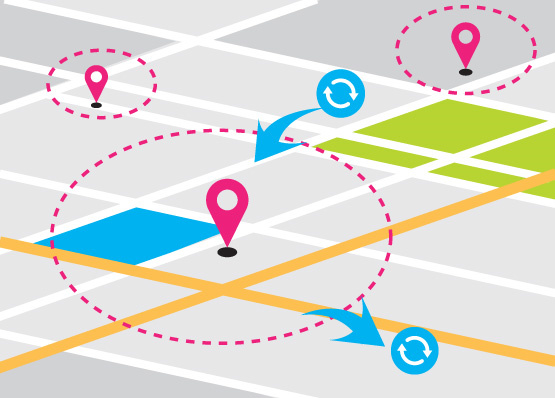In a new development, with optimization of performance in mind, Lyft is introducing geofencing along Valencia Street in the Mission District of San Francisco. This new system will limit customer pick-ups in area's that are too busy. The new technology will transfer customers to side streets where it is safer for both the driver and the passenger to coordinate a pickup location and provides a better environment that will alleviate double parking and help ease negotiating with cyclists.
A Lyft spokesperson stated to the media that "Lyft believes that combining technology and infrastructure is necessary to create safe, vibrant streets. We're encouraged by the City's recent installation of safe-hit posts along Valencia Street and are excited to collaborate on experiments, like this current pilot on Valencia, that can help support citywide Vision Zero and multi-modal goals."

One of the biggest issues win rideshare driving in San Francisco, and in fact, in many major cities where there is a lot of inner city traffic, pedestrians and cyclists are how the drivers negotiate parking in all the mass influx of people and vehicles. San Francisco, in particular, has a lot of cyclist lanes, a lot of pedestrians and a lot of traffic. Some areas are so convoluted that it is now considered to be a no-drive zone for many rideshare drivers. Approximately 66% of all traffic violations during 2017 were linked to rideshare drivers.
Lyft was working in collaboration with the late Mayor, Ed Lee, who died of a heart attack in December 2017. They were working on a safety pilot, and due to the Mayor's death, the project was pushed aside. The main element of the project included creating Rideshare Pickup and Drop off locations in exchange for city rideshare data.
Lyft has decided to take matters into its own hands and created the geofence pilot to help drivers with pick up and drop off locations. So far, Lyft has decided to test out the Valencia Street area, which is so problematic that cycle lanes now have protective barriers in place to fend off double parking.
Geofencing is a useful tool for app-driven operations, it is also a useful tool for sharing data cross platform, so that other platforms can collaborate with geofencing and create a more comprehensive city wide collaboration on where cars can park, pick up and drop off passengers, as well as set times for geofencing that will cancel the geofence during certain hours of the day and night. Geofencing is also used in bikeshare apps as well as in AV technology.
